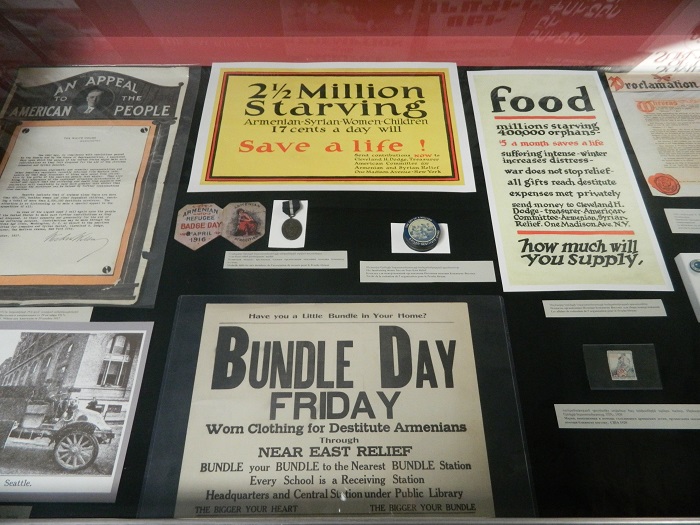Fact No. 24.
Responses to the Armenian Genocide comprised the first international humanitarian movement.
The Armenian Genocide did not take place behind closed doors. Certainly, the First World War offered adequate cover, but the news of massacres and deportations made it out into the world.
The world heard, and the world responded. The way the world responded has shaped the way international humanitarian movements operate ever since.
On top of the list was the American Committee for Syrian and Armenian Relief, later known as Near East Relief, and still functioning today as the Near East Foundation. It was conceived by the US Ambassador to the Ottoman Empire, Henry Morgenthau, Sr. (whose memoirs offer powerful first-hand insights into how the Armenian Genocide played out), and led by a number of influential Americans, including President Woodrow Wilson. Near East Relief started its efforts in the middle of the war and continued to care for survivors and orphans in Syria, Lebanon, Greece, and elsewhere in the region, even what became the Soviet Union, all the way up to 1930. During the course of that time, it allocated around 117 million dollars – a mind-blowing figure in today’s money – saving at least a million people, including housing, feeding, and clothing 132,000 Armenian orphans. It is rightfully said that Near East Relief “quite literally kept an entire nation alive”.
Near East Relief and its efforts was the first time the world saw a national campaign of fundraising for international humanitarian work. Jackie Coogan – a child star of the 1920s and later famous for portraying Uncle Fester on The Addams Family TV show in the 1960s – was the very first celebrity endorser for collecting donations in money and in kind, leading a tour of the United States and Europe, where he met the Pope. He later accompanied the one million dollars worth of food and clothing to Athens, to be delivered to orphans.
There is even a report of a tribe of South African converts to Christianity who made a donation to Near East Relief to be of even some small assistance to “the starving Armenians”.
But it wasn’t just Near East Relief. Societies to come to the aid of Armenians sprung up all over. As far away as Australia, to give one example, the Armenian Relief Fund in 1915 grew into the Australasian Armenian Relief Fund by 1922, sponsoring an orphanage in Lebanon that housed over 1,500 orphans.
A special mention must be made of Scandinavian responses to the Armenian Genocide. Alongside the US president of the time, another world leader also features on the list of advocates for the Armenians – Fridtjof Nansen of Norway, whose diplomatic efforts under the League of Nations were of great assistance to the refugees of that era. Names such as Maria Jacobsen are familiar to the descendants of the orphans under her care, and one of the Armenian schools of Aleppo, Syria, is named after Karen Jeppe. Both of those women were from Denmark, and both dedicated their lives to serving Armenian Genocide survivors, finding their final resting place alongside them in Lebanon and in Syria.
References and Other Resources
1. Peter Balakian. The Burning Tigris: The Armenian Genocide and America’s Response. Harper Perennial, 2004
2. Armenian National Institute. “Near East Relief and the Armenian Genocide”
3. Near East Foundation. “Who We Are: History”
4. Armenian Genocide Education Australia. “Australia’s Response”
5. Vicken Babkenian. “Hollywood’s First Celebrity Humanitarian that America Forgot”, The Armenian Weekly, January 7, 2011
6. Karekin Dickran. “Maria Jacobsen and the Genocide in Armenia”. The Danish Peace Academy, 2004
7. Eva Lous. “Karen Jeppe: Denmark’s First Peace Philosopher”. The Danish Peace Academy, 2003
8. The Armenian Genocide Museum-Institute. “The International Conference – ‘The Armenian Genocide and the Scandinavian Response’”
Image Caption
A sample of flyers and brochures by Near East Relief calling for donations to help victims of the Armenian Genocide
Attribution and Source
By Syumich (Own work) [CC-BY-SA-3.0], via Wikimedia Commons
Follow us on
Recent Facts
Fact No. 100
…and the Armenian people continue to remember and to...
Fact No. 99
…as minorities in Turkey are often limited in their expression…
Fact No. 98
Armenians continue to live in Turkey…
Fact No. 97
The world’s longest aerial tramway opened in Armenia in 2010

